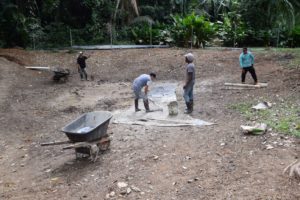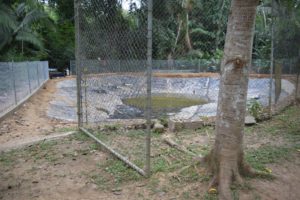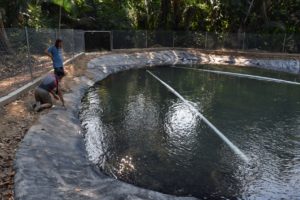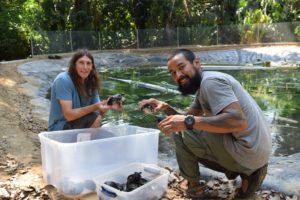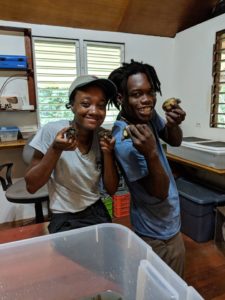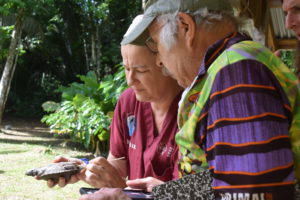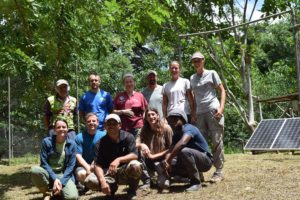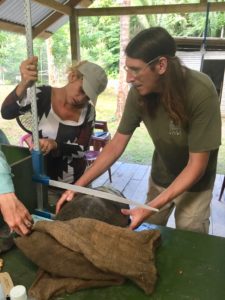New Rearing Pond at the Hicatee Conservation & Research Center
Designed to study the reproductive biology and to determine if the Central American River turtle could be bred in captivity, the Hicatee Conservation & Research Center opened in 2014 and was met with immediate success when, in the summer of 2015, the first seven hatchlings emerged. This was followed by five hatchlings in 2016, 84 hatchlings in 2017, and 179 in 2018.
The HCRC originally included two large breeding ponds, an overflow pond and several rearing tanks. The small rearing tanks at the center quickly reached capacity and HCRC staff identified an urgent need to provide the necessary space and improved environment for the 2018 hatchlings and the soon to arrive 2019 cohort. After much discussion, it was determined that converting the overflow pond into a large rearing pond for hatchlings and juveniles was the most cost effective and quickest solution to housing all the expected hatchlings now and in the foreseeable future.
We secured funding from Oklahoma City’s Zoo’s Care Grant Program and from Zoo New England to begin pond modifications. Additional support was provided through funding for supplies offered by Jacksonville Zoo and Gardens in 2018 and the purchase of a very important piece of machinery was made possible thanks to proceeds from the Turtle Survival Alliance’s 2018 fundraising auction.
Pond modification was slow to get underway due a very wet rainy season. However, during February and March construction took place and 140 turtles were placed in their new home in April. The rearing pond (Pond C) is forty-feet in diameter and approximately six-feet deep at the center. A six-foot perimeter fence will encircle the pond and fresh water is provided by solar powered pumps which were already in place at the facility. We will modify Pond C in the coming months to include a floating island and the planting of food trees and grasses as has been done in Ponds A and B. Our hope is that the facility will offer a healthy environment for all hatchlings produced at the HCRC until they are ready for release into the wild.
Thanks to the Turtle Survival Alliance for their continued partnership on the Hicatee Conservation and Research Center. Thanks also to project sponsors: Oklahoma City Zoo, Zoo New England and Jacksonville Zoo and Gardens.


